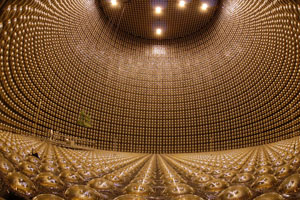Date:
Friday, July 19, 2013

 Scientists from Japan, UC Irvine and elsewhere today confirmed they have documented muon neutrinos transforming into electron neutrinos. The breakthrough could help explain “one of the most profound mysteries in science,” according to the group – why the universe is full of matter but not anti-matter.
Scientists from Japan, UC Irvine and elsewhere today confirmed they have documented muon neutrinos transforming into electron neutrinos. The breakthrough could help explain “one of the most profound mysteries in science,” according to the group – why the universe is full of matter but not anti-matter.
The finding was announced today at the European Physical Society meeting in Stockholm by the international T2K (Tokai to Kamioka) collaboration, named for two Japanese villages that are hubs of a decades-long experiment to track the invisible neutrinos.
